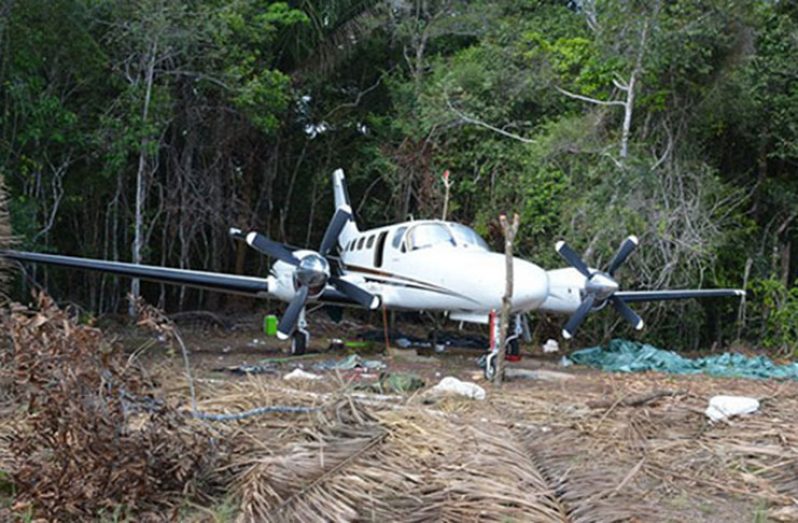By Zena Henry
Guyana must find better ways to man its borders to maintain territorial integrity and provide a safe environment for locals and visitors. This is especially necessary and proving to be of greater concern as Guyana battles claims by neighbouring Venezuela, even while figuring out ways of preventing illegal aircraft and even submarines from making their way into the country undetected.Guyana is opening itself to the world as a business destination and more recently, a rising oil-producing nation which has led some officials to reiterate calls for better equipment of the Guyana Defence Force (GDF); the agency constitutionally designated to protect the country’s borders from any illegal entries.
The call comes after the Commission of Inquiry into the landing of an illegal aircraft in the southern part of the country. The inquiry’s report which is not yet publicly available was conducted by Retired Brigadier Edward Collins to ascertain how the aircraft got to Guyana, whether communication between the relevant security agencies was effective and whether the intelligence system should be reviewed.
The Guyana Chronicle has learnt however that some of the COI’s findings included poor or non-existent communication chains that would allow for the flow of information. It was noted that, “there is no existing structure in the Joint Services to disseminate information received by either of the Services deployed in the region.”
It was also found that in regard to this matter, persons; police officers, regional officials and GDF ranks did not act within their priories, and disciplinary action was recommended.
The COI report also found that the State’s aviation authority is in no position to locate illegal aircraft within the country’s territory, despite the use of the Automatic Dependent Surveillance-Broadcast (ADS-B) which the aviation industry adopted some two years ago.
The report said that although the ADS-B system is capable of monitoring Guyana’s airspace, it is not suitable to monitor or detect the intrusion of illegal aircraft.
Both Director General of the GCAA Egbert Field and Collins told the Guyana Chronicle that the ADS-B system requires communication between the ground team and the pilot to ensure the operation of the system.
“They (pilot and Air Traffic Controllers) have to cooperate,” Collins told the newspaper. He opined that unless the pilot activates his system and communicate with the ground crew then the system is useless.
Collins was adamant however that the best way to protect the borders, “air, land and sea,” the GDF needs to be better equipped. He agreed that did Guyana have an active Air Force, it would have been their responsibly to protect Guyana against any intrusion by air.
Some two years back, the GDF expressed optimism in re-fleeting its air wing. It was pointed out then that the GDF was utilizing a 1960s British-made Skyvan with several years of operation, a “corroding” Chinese Harbin Y-12, purchased in 2001, a single-engine Cessna 206 seized during a drug raid and helicopters that included a Bell 412.
Veteran pilots suggested the sourcing of new airplanes such as short C-23 Sherpa and the Polish light cargo and passenger PZL M28 Skytruck, deemed ideal for the relatively short and sometimes rough interior terrain. When then Opposition Leader, and retired Brigadier David Granger was asked about the army’s air fleet he too noted that, “Given our perception of the current threats to Guyana’s national defence and security, there needs to be more attention paid to deal with territorial issues; border and territorial security.”
The then Opposition Leader had endorsed the need for additional financing to develop specifically the country’, Air Corps and Maritime arm, given piracy reports and banditry in interior locations. The illegal aircraft found at Yupukari, Rupununi, was found last September.
Officials have concluded that the plane originated from Columbia and was being used to transport drugs; cocaine specifically. The submarine found in the Waini River in 2014 was also believed to have been connected to Colombians.



.jpg)










